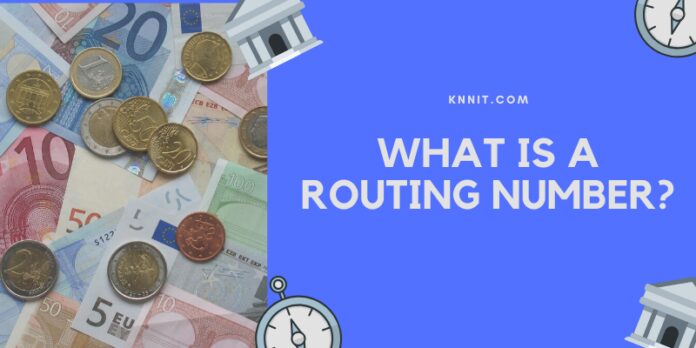
Almost every bank and financial organization around the world has gone online with its services in today’s world and you can very well manage all your transactions using the phone which fits in the palm of your hand. These transactions require a set of data that is used for the sender’s and receiver’s identification. Your account number, your name as mentioned in your bank account details, and your routing number, are all parts of this information.
Almost everyone is familiar with their account numbers. The names mentioned in the account details also don’t really require an explanation. The one thing that most people get confused about is their routing number. This shall be elaborated below.
What is a Routing Number?
Your routing number is a 9 digit number, which is different from your account number. This number is basically used to identify the bank that your account was originally opened at.
This means that each bank has a unique routing number. In the case of large banks with multiple branches, each branch pertains to a different routing number, specific to its location.
Similarly, in the case of smaller banks or banks that operate completely online, they have a single routing number common to all its users. The routing number is assigned to the banks by the American Bankers Association or ABA.
This routing number is also known as the “Check Routing Number”, “ABA Number”, or “Routing Transit Number (RTN)”. You require your routing number for almost any transaction that you might want to make. Hence, keeping it available before initiating a transaction is a good practice.
Now that you know what your routing number is, you must now know of its uses and the places where you would need your routing number.
Uses of a Routing Number:
Your routing number is an essential piece of information for your transactions. Some of the major uses of routing number are:
- The most obvious use of your routing number is the identification of the bank and its branch where your account was opened at. This ensures smoother transactions. It also represents that you are a user of your bank.
- ACH or Automated Clearing House Payments are another kind of transaction where you would need your routing number. These are the electronic payments that enable you to transfer funds directly from your bank account, without the use of your check or debit or credit card. An ACH cannot be made without your routing number.
- Likewise, the automatic payments of bills that are debited from your bank account regularly also need your routing number information for a successful transaction.
- Setting up a direct deposit of funds is another transaction that requires your routing number.
- Similarly, just any kind of transfer of money and funds from one account to another cannot be made with your correct routing number.
- It is also needed for receiving benefits from the government, like tax refunds, directly into your bank account.
That’s a Wrap
The above-listed points make it clear that your routing number is an important detail of your bank account and must be known to you before initiating a transfer of funds. You can find it at the bottom left corner of one of your checks, as a 9 digit number.
You can also simply browse through your bank’s website, or call their helpline number to know your routing number. Additionally, some banks use a different routing number for domestic wire transfers and SWIFT code for international wire transfers. Hence knowing the correct routing number to use for your transaction is just as important.





